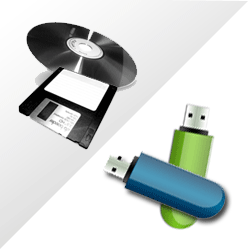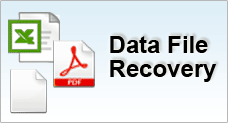| Storage Media | Hard Disks | DVD Disc | |||
| Optical Discs | Tape Media | Flash Drive | |||
| Zip Catridges | RAID | Removable Media | |||
| (U)niversal (B)us (S)erial |
What is a Flash Drive?
Equipped with a NAND-type flash memory and integrated with a USB 1.1 or 2.0 interface, a flash drive is a removable, compact and non-volatile data storage device that acts like a portable hard disk. However unlike the size of the latter, a flash drive is usually no longer than a cigarette lighter and only weighs half an ounce.
Mechanics
Encased in a robust plastic casing, the flash drive contains a small printed circuit that connects to an embedded flash memory and a USB connector. This USB connector often protruded out of its casing to allow the user to plug the drive into the computer's USB port. For safety purposes, a plastic cap is usually designed to cover and protect the USB connector.
How Does it Work?
When a flash drive is plugged into a computer's USB port, the system's plug and play capability detects the new hardware and displays a new logical drive in the My Computer workspace. Users can then access the drive by double clicking on the drive icon and simply drag any files across for transmission instantly.
Developement
 |
The flash drive was designed for its portability and interoperability to replace bulky diskettes and CD-RWs that were used to transfer files between two or more machines.
Back in 1980, floppy diskettes were popular removable storage media when file sizes were generally small. Today, a word document file containing graphics, charts and macro codes can easily amount to 10MB as compared to a few hundred kilobytes before 2001. CD-RWs soon replaced the 1.44MB diskettes to combat the file constraint. However, re-writable discs are proprietary media that require a CD-writer and software to store data.
When the flash drive was made available, it eliminated both problems and allows machines to read and write data without the need of any software or peripheral devices.
Using the Drive
The flash drive does not require an external power supply. Essentially, it runs off the small power supplied by the USB connection and is compatible with any computer that supports the Universal Serial Bus capability.
New USB Flash Drives now support transfer rates up to 480 Mbits/s and storage capacity up to several GB.
Due to heavy marketing and product branding, flash drives have been coined and associated with names such as USB drive, key drive, thumb drive, keychain drive etc.


